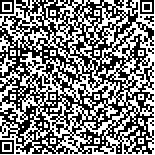汪益,董启榕,许建铭,等.腘绳肌维持受损膝关节稳定性的负重位磁共振研究[J].中华物理医学与康复杂志,2020,42(7):623-627
扫码阅读全文

|
| 腘绳肌维持受损膝关节稳定性的负重位磁共振研究 |
|
| |
| DOI:10.3760/cma.j.issn.0254-1424.2020.07.009 |
| 中文关键词: 前交叉韧带 磁共振成像 被动松弛度 膝关节 |
| 英文关键词: Weight bearing Magnetic resonance imaging Anterior cruciate ligament Passive relaxation Hamstring muscles Knee stabilization |
| 基金项目:磁共振弥散张量成像在前交叉韧带损伤中的应用 苏州高新区医疗卫生科技计划项目(2018Z010) |
|
| 摘要点击次数: 5132 |
| 全文下载次数: 6370 |
| 中文摘要: |
| 目的 通过负重位磁共振成像(MRI)检查,探讨增强腘绳肌腱力量对膝关节稳定性的作用。 方法 纳入符合条件并经临床和MRI诊断证实的前交叉韧带(ACL)撕裂患者30例,按随机数字表法分为训练组和对照组,每组15例。所有患者均在损伤水肿期过后进行标准六阶段的前交叉韧带损伤康复训练,包括等速运动练习、等张收缩练习、单足或双足跳、本体感受器练习、心血管功能练习等;训练组在此基础上增加腘绳肌强化训练,包括负重屈曲膝关节6~8次为1组,训练3组,每周至少5次,训练3个月。所有患者均于康复训练前及训练结束后1个月之内进行膝关节被动松弛度检查、膝关节功能评分(Lysholm评分)和负重位MRI检查;负重位磁共振测量患者在负重状态下的胫骨前移度(TAS)。 结果 训练前,训练组和对照组患者膝关节的被动松弛度[(4.9±1.6)和(4.7±1.3)mm]及Lysholm评分[(78.9±5.3)和(79.1±4.6)分]组间差异均无统计学意义(P>0.05)。训练后,2组患者膝关节的被动松弛度[(4.8±1.6)和(4.9±1.2)mm]与组内训练前比较,差异无统计学意义(P>0.05)。训练组和对照组患者训练后的Lysholm评分分别为(82.3±7.5)和(85.9±6.9)分,明显高于组内训练前评分(P<0.05);而2组训练后的Lysholm评分组间差异并无统计学意义(P>0.05)。训练后,训练组和对照组的TAS分别为(1.5±1.0)和(3.5±1.2)mm,明显小于组内训练前[(2.5±1.2)和(3.4±0.9)mm],且训练组训练前后差异有统计学意义(P<0.01),对照组训练前后差异无统计学意义(P>0.05);且训练后,训练组的TAS显著小于对照组(P<0.05)。 结论 增强腘绳肌肌力可以减少负重直立位的胫骨前移度,从而改善膝关节的稳定性。 |
| 英文摘要: |
| Objective To investigate the effect of enhancing the strength of the hamstring on the stability of the knee joint. Methods Thirty patients with anterior cruciate ligament (ACL) tears were randomly divided into a training group (n=15) and a control group (n=15). After the injury′s edema stage, all of the subjects received the standard 6-stage rehabilitation training for ACL injury, including isokinetic exercise, isometric tension and contraction exercise, single or bipedal jumping, proprioception exercises and cardiovascular exercise. On the basis of that standard training, additional hamstring strengthening training was given to the training group. It involved three sessions of weight-bearing flexion of the knee joint six to eight times, at least five times a week for three months. All of the subjects underwent the passive relaxation test (PRT), knee function scoring (Lysholm scores) and weight-bearing MRI before and within 1 month after the training. Anterior shift of the tibia (TAS) was measured using weight-bearing magnetic resonance imaging (MRI). Results Before the training there were no significant differences between the groups in terms of average PRT or Lysholm scores. After the training, the average PRT score in neither group had improved significantly. The average Lysholm scores of the training and control groups were not significantly different either, though both groups′ averages had improved significantly compared with before the training. The average tibial shifts were also significantly smaller than before the training, with the training group′s average significantly smaller than that of the control group. Conclusion Increasing hamstring muscle strength can reduce tibial anteversion in the weight-bearing upright position and improve the stability of the knee joint after ACL injury. |
|
查看全文
查看/发表评论 下载PDF阅读器 |
| 关闭 |
|
|
|